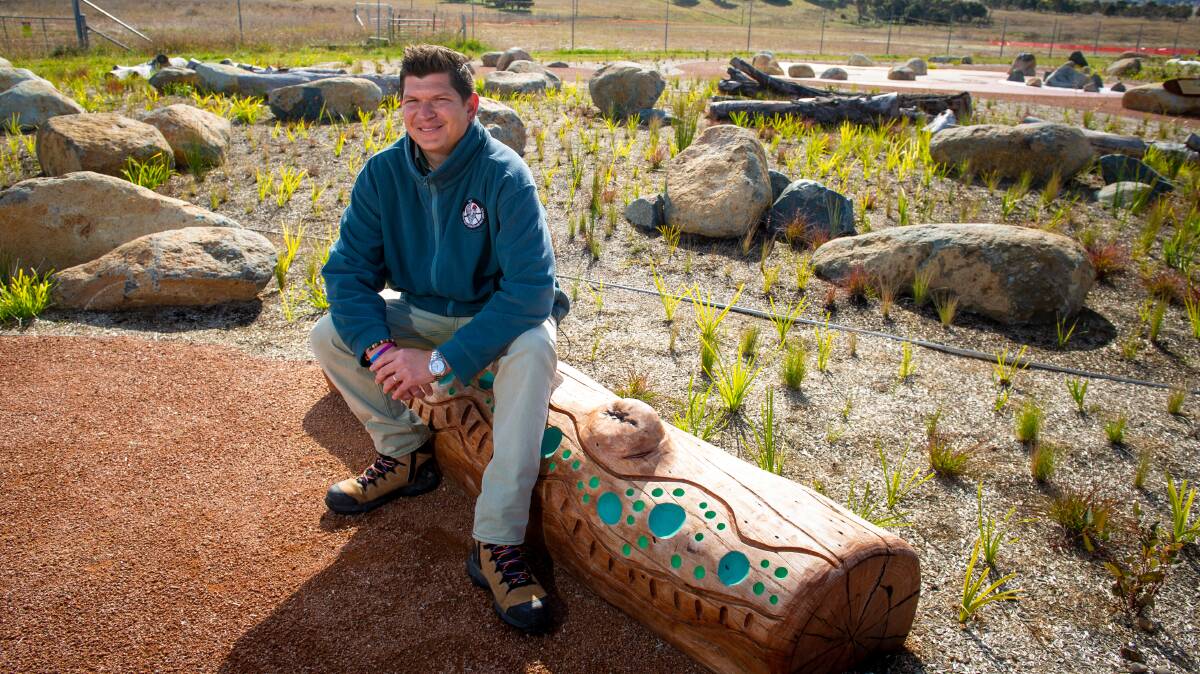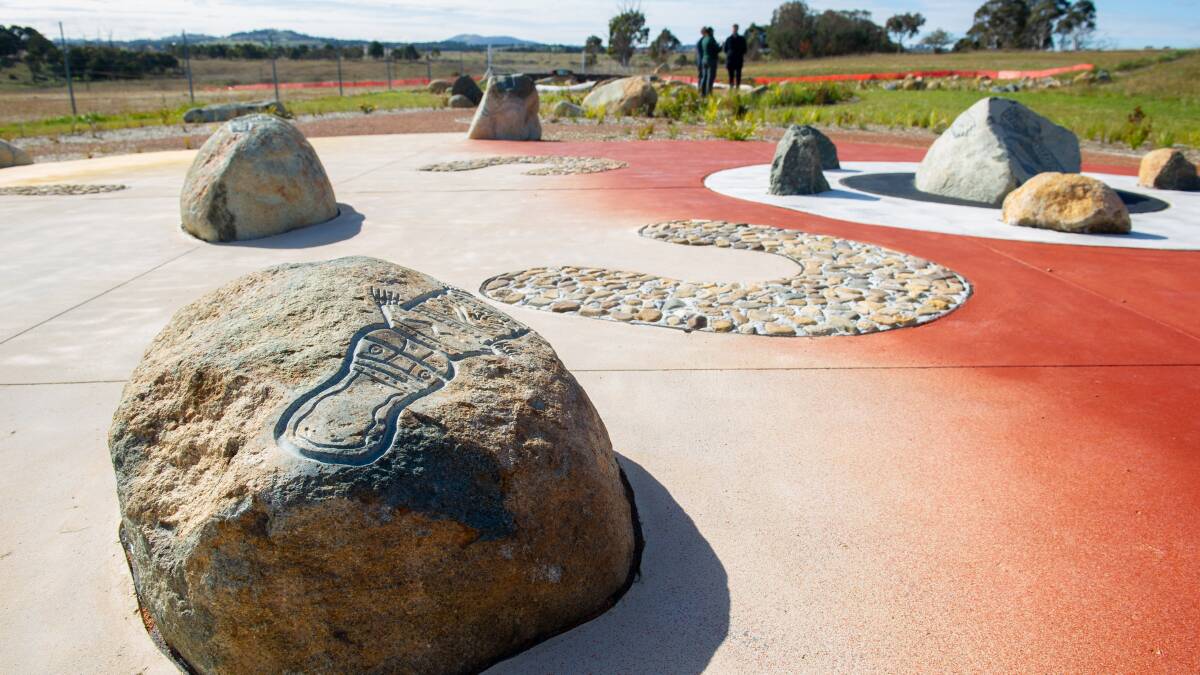
A section of nature reserve destroyed after the decommissioning of the old Belconnen sewerage treatment plant has been reopened to the public, its restoration including the establishment of a cultural garden acknowledging the Ngunnawal people's connection to the area.
Subscribe now for unlimited access.
or signup to continue reading
Several hectares of the Jarramlee-West MacGregor Grassland Nature Reserve have been closed for almost a decade after material from the plant was buried at the site when it closed in 1979.
The land on the fringe of MacGregor has been re-vegetated using more than 25,000 plants and 130 kilograms of native grass seed, its restoration expected to increase habitat for the Golden Sun Moth.
A naturalised swale has been built to move water runoff from the suburb into a bio-retention pond for filtering and then into Ginninderra Creek.
Entry to the site now includes a space designed to encourage visitors to reflect on the site's history, including its restoration highlighting its cultural importance.

Darren Le Roux, project manager at ACT Parks and Conservation service, said Jarramlee is one of the really significant sites for the Ngunnawal people due to its location along the creek line.
Dr Le Roux said it was once an importance place for both meeting of community and for movement.
"From a cultural perspective, Jarramlee is archaeologically one of the most important sites in the ACT region," he said.
"To be able to remediate, and create a space like this where we can showcase the cultural and ecological significance of the area, is probably one of the key draw cards of this project."
Dr Le Roux said working with community to remediate the grasslands and tell their stories had been a great success.
"Those [sites] used to be the breadbasket of the landscape, and still are, they still hold a really important ongoing significance for culture and for the Ngunnawal people," he said.
Dr Le Roux said when the Belconnen sewerage treatment facility had been decommissioned, the above ground material had just been buried on location.
READ ALSO:
He said stormwater runoff from the suburbs, combined with the damage burying the facility had done to the land, led to ground slumping and the exposure of the buried material.
"Unfortunately, in the early 2000s we experienced some ground subsidence, and in 2014 the site was actually closed to the public," he said.
Dr Le Roux said manholes, pipes and tanks was among the equipment that had been buried.
"Back in the day that was pretty standard decommissioning practice," he said.
"Of course, we've learned a lot since then, but we inherited a bit of a challenge on the site."
Planning Minister Mick Gentleman said Jarramlee Nature Reserve protects part of the second-largest recorded population of the vulnerable Golden Sun Moth in the ACT.
"The newly restored site will help increase the habitat for the Golden Sun Moth, which relies on temperate grassy ecosystems for survival," he said.
Mr Gentleman said ACT government was proud to showcase the deep ecological and cultural importance of the reserve.
"Ngunnawal people maintain meaningful connections with this land, including Ginninderra Creek, native grasslands and ceremonial sites within the area," he said.
We've made it a whole lot easier for you to have your say. Our new comment platform requires only one log-in to access articles and to join the discussion on The Canberra Times website. Find out how to register so you can enjoy civil, friendly and engaging discussions. See our moderation policy here.


